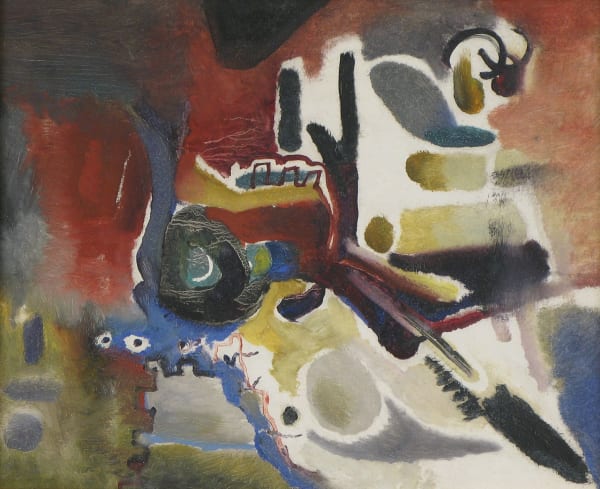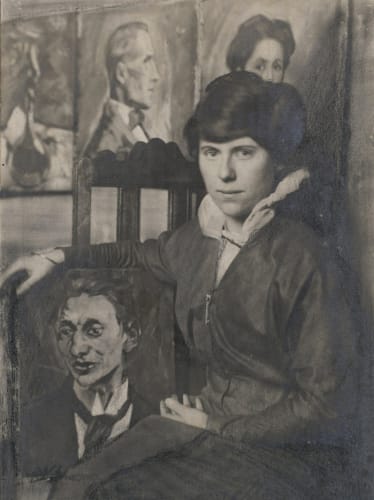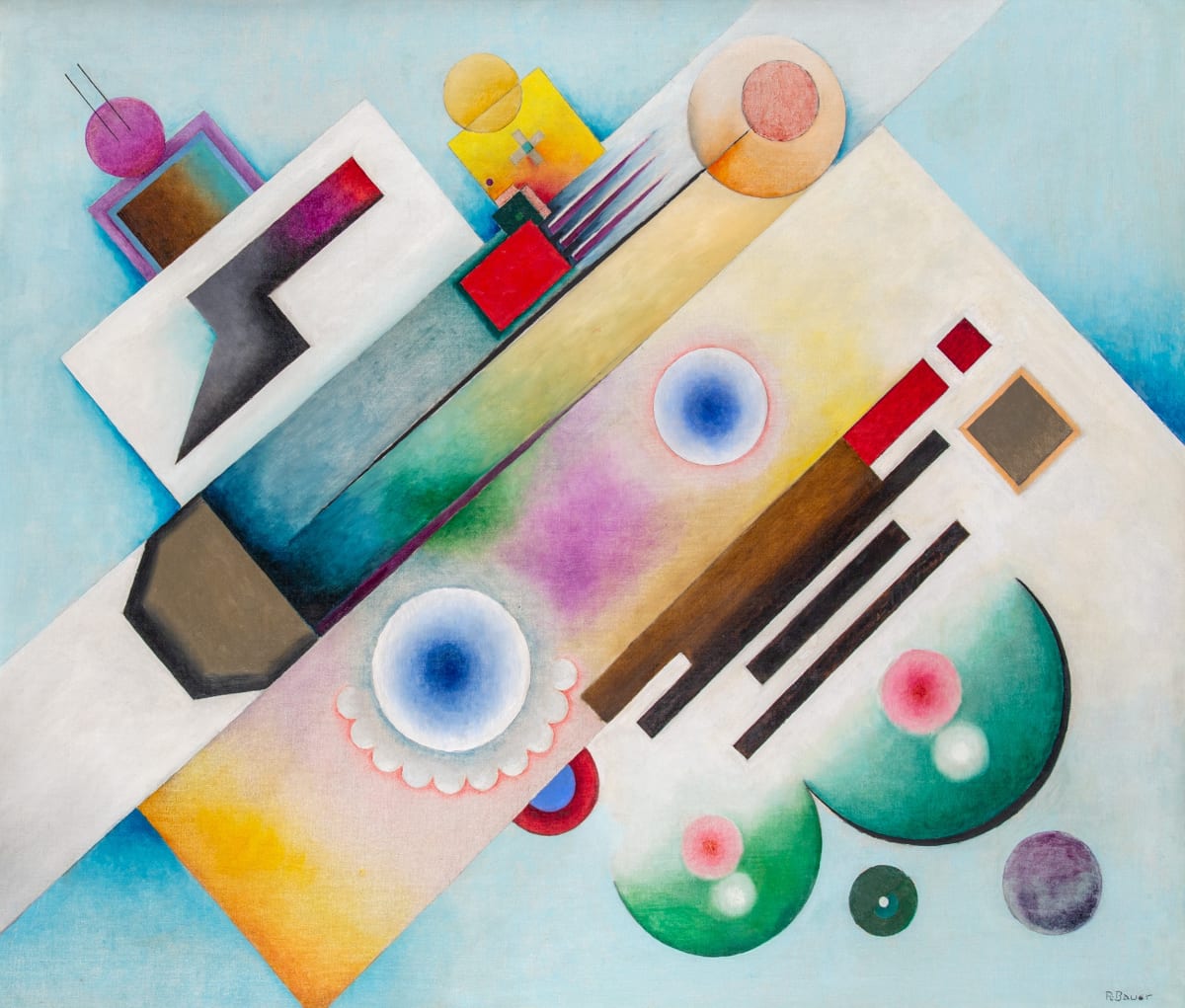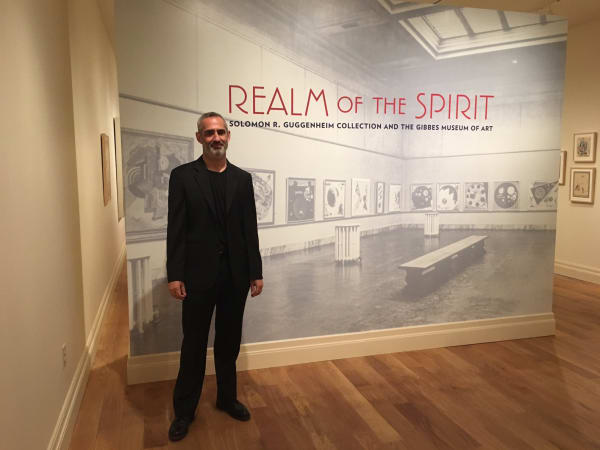Hilla Rebay (Baroness Hilla Rebay von Ehrenwiesen) was born in 1890 in Strasbourg, Alsace, then part of Germany, and studied painting in universities in Cologne, Paris and Munich. In 1917 she moved to Berlin and was introduced to Herwarth Walden's avant-garde Galerie Der Sturm. It was there that she met the artist Rudolf Bauer, with whom she had a lifelong relationship. In 1918 she exhibited with the Novembergruppe, and in 1919 Rebay and Bauer moved in to a shared studio in Berlin.
Although formally trained as a figurative artist, Rebay's passion became a style of abstraction referred to as "non-objective art," an art form that aimed to break ties with the external world and depict an internal expression of a spiritual nature, encouraging a utopian and educational goal for art. She stated its intention as follows: "It is spirit, cosmic order, and creation of beauty which originates the work of art." In addition to painting, she created masterful collages of portraits, figurative compositions and non-objective depictions.
In 1927 Rebay moved to the United States and, with introductions by influential friends and colleagues, became an established figure in New York. It was there that she met the Guggenheim family, and when Solomon Guggenheim requested that she paint his portrait, she took the opportunity to encourage him to collect non-objective art, particularly the work of Wassily Kandinsky and Rudolf Bauer, which she referred to as the art of tomorrow.
Solomon Guggenheim, with the guidance of Hilla Rebay as his first curator and director, became a champion of non-objective art, and in the 1930s, such art became the cornerstone of his Museum of Non-Objective Painting, later renamed the Solomon R. Guggenheim Museum. It was Rebay who chose Frank Lloyd Wright to design the permanent museum in which to house the massive collection of modern art that she also helped curate. Upon Guggenheim's death, the focus of the museum expanded from its original vision of non-objective art, and Rebay was replaced as director by James Johnson Sweeney. Rebay died in 1967.
-

The Love Triangle That Birthed the Guggenheim
CULTURED Mar 28, 2023The Solomon R. Guggenheim Museum has housed masterpieces of impressionist, modern, and contemporary art in New York since its founding in 1939, and is famous...Read more -

Visionaries: Creating a Modern Guggenheim at the Solomon R. Guggenheim Museum
Feb 10, 2017Solomon R. Guggenheim ’s wholehearted embrace of modern art around the age of 68 was not so dissimilar from his philosophy for succeeding in business....Read more -

Realm of the Spirit: Solomon R. Guggenheim Collection and the Gibbes Museum of Art at the Gibbes Museum of Art
Oct 22, 2016In 1936 the Gibbes Museum of Art presented the first formal exhibition of Solomon R. Guggenheim’s collection of modern art. Featuring works by Marc Chagall,...Read more







